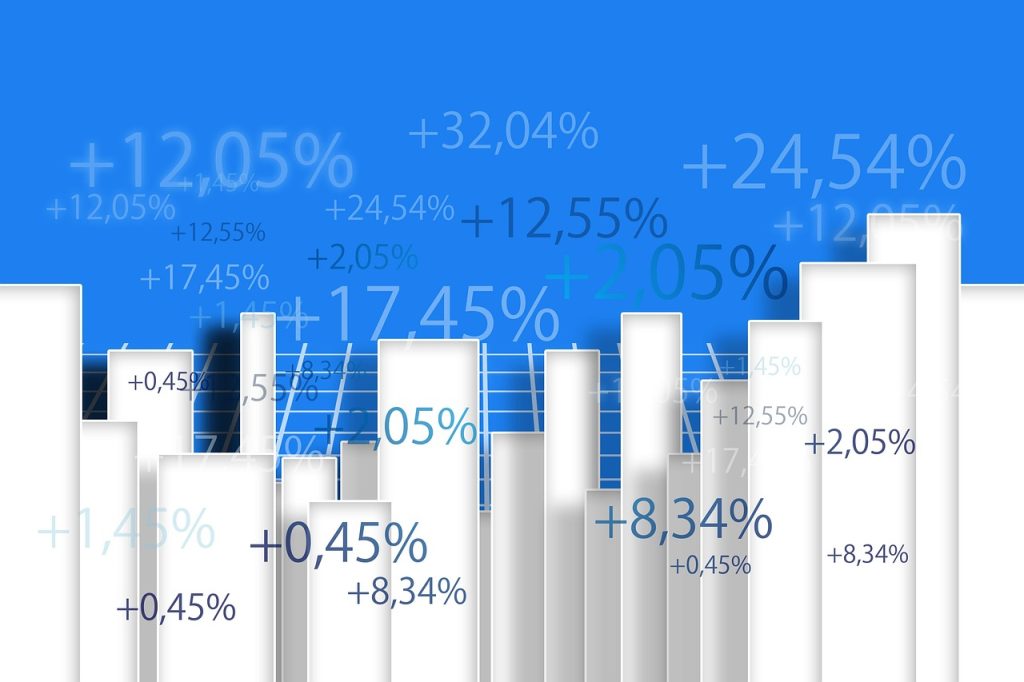Money Market Funds (MMFs) have become one of the most popular investment options in Kenya, offering everyday savers and seasoned investors alike a safe, liquid, and relatively high-return way to grow their money. With current yields trending higher than traditional bank savings accounts, MMFs are increasingly attractive for individuals seeking to preserve capital while still earning competitive returns.
This blog takes a comprehensive look at MMFs in Kenya, the latest rates, what drives the differences among funds, and how you can make informed decisions to maximize your returns.
What Exactly Is a Money Market Fund?
A Money Market Fund is a type of collective investment scheme that pools money from different investors and directs it into short-term, low-risk securities. These include:
- Treasury bills
- Bank deposits
- Commercial papers (short-term corporate debt)
- Government bonds with short maturities
The goal is threefold: preserve your capital, provide daily or near-daily liquidity, and deliver modest but attractive returns.
In Kenya, MMFs are licensed and regulated by the Capital Markets Authority (CMA), which ensures transparency and enforces rules on how they operate. This regulation makes MMFs one of the safer investment vehicles available to retail investors.
Understanding MMF Yields
When evaluating MMFs, you’ll often come across two key measures of return:
- Daily Yield – the percentage return you earn each day if your money is invested.
- Effective Annual Rate (E.A. Rate) – this takes into account daily compounding and shows how much you’d earn over a year if you reinvested your gains.
Even small daily differences can add up significantly when compounded over 365 days.
The Current MMF Landscape in Kenya
As of early 2025, Kenyan MMFs are reporting very competitive rates compared to traditional savings. Here’s a snapshot of some of the most notable funds and their yields:
- GCIB Money Market Fund (KES): Daily yield ~15.06%, with an effective annual rate of about 16.25%.
- Lofty-Corban Money Market Fund: Daily yield around 14.28%, translating to roughly 15.25% effective annual.
- Kuza Money Market Fund: Daily yield ~14.01%, effective annual ~15.03%.
- Etica Money Market Fund: Daily yield ~13.98%, effective annual ~15.01%.
- Others, such as CIC, Jubilee, Old Mutual, and Sanlam funds, tend to yield between 9% and 13%, depending on their investment strategy and asset mix.
A key trend is that funds denominated in Kenyan shillings (KES) are offering significantly higher yields than those denominated in U.S. dollars, which generally average between 4% and 6%.
Why Do Rates Differ?
Not all MMFs are created equal. The variation in yields across different funds can be traced to several factors:
- Investment Strategy – Some funds invest more aggressively in higher-yielding instruments like corporate papers, while others stick to conservative Treasury bills.
- Currency Denomination – USD funds yield less because global U.S. dollar rates are lower compared to Kenya’s higher domestic interest rates.
- Fund Size and Bargaining Power – Larger funds often negotiate better deposit rates or access to exclusive instruments, boosting returns.
- Management Fees – The net return investors receive is after management fees, which vary between funds. Even a 1% difference in fees can significantly reduce annual earnings.
- Liquidity Rules – Funds that promise instant withdrawals may invest in lower-yield instruments to ensure cash is always available.
Comparing Key Money Market Funds in Kenya
Let’s take a closer look at some of the most prominent MMFs and what makes them stand out:
Lofty-Corban Money Market Fund
- Strengths: Offers both KES and USD options, and even a “special” tier for high-net-worth investors. Entry level for the standard fund is only KES 1,000.
- Considerations: For the special fund, you need at least KES 1 million to participate. Higher yields sometimes come with slightly stricter withdrawal conditions.
GCIB Money Market Fund
- Strengths: Among the top-yielding funds in Kenya, consistently posting over 16% effective annual rates. Attractive to both individuals and institutions.
- Considerations: May have higher minimum entry levels, and USD investors carry currency risk. Withdrawal processing may also vary.
Etica Money Market Fund
- Strengths: Tech-savvy and highly accessible with low entry barriers. Investors can track performance digitally. Fees are competitive, and returns are attractive.
- Considerations: As with most tech-driven services, occasional platform issues can arise.
Kuza Money Market Fund
- Strengths: Competitive yields and a balanced investment portfolio. Good for retail investors who want consistent returns.
- Considerations: The specific allocation of investments may expose investors to slightly higher risks in pursuit of yields.
Mali Fund (Safaricom)
- Strengths: Extremely low minimum entry of just KES 100, integrated into M-PESA for convenience. Perfect for beginners or casual savers.
- Considerations: Daily investment limits apply, and returns are slightly lower than the highest-performing funds.
Established Names (CIC, Jubilee, Old Mutual, Sanlam)
- Strengths: Backed by strong, reputable financial institutions. Reliable and safe, with wide availability.
- Considerations: Yields are often lower compared to newer, more aggressive funds.
Who Should Invest in an MMF?
MMFs are suitable for a wide range of people, including:
- Short-term savers: If you’re saving for an expense within the next 6–12 months, MMFs are ideal.
- Emergency fund holders: Liquidity makes MMFs perfect for rainy-day savings.
- Conservative investors: If you want stability without exposing your money to stock market volatility, MMFs are a great choice.
- Individuals fighting inflation: With inflation in Kenya often hovering around 8–10%, MMFs help ensure your money doesn’t lose value in real terms.
They are less suited for those chasing high growth or long-term wealth accumulation, where equities or real estate might be better.
Risks to Keep in Mind
Despite being low-risk, MMFs are not risk-free. Key risks include:
- Inflation Risk: If inflation outpaces MMF returns, your purchasing power still declines.
- Interest Rate Risk: If central bank rates fall, yields on MMFs will also drop.
- Currency Risk: For USD funds, shifts in exchange rates can erode returns when converting back to shillings.
- Liquidity Risk: In rare financial stress scenarios, funds may delay redemptions.
- Credit Risk: While funds generally stick to safe instruments, defaults in commercial papers are still possible.
Practical Example: Investing KES 200,000 in an MMF
Suppose you invest KES 200,000 in a fund yielding an effective annual rate of 15%.
- After one year, you’d earn about KES 30,000 in returns.
- If instead you put the money in a fixed deposit yielding 7%, you’d only earn KES 14,000.
- That’s more than double the earnings, while still maintaining liquidity and relative safety.
This simple calculation shows why MMFs are pulling so much attention from Kenyan savers.
Tips to Maximize MMF Returns
- Compare effective annual rates, not just daily yields. Compounding makes a big difference.
- Check management fees carefully. Lower fees mean higher net returns.
- Diversify across funds. Balance high-yield funds with more conservative ones.
- Leverage digital platforms. Choose funds with apps or USSD access for convenience and transparency.
- Stay updated. MMF rates change depending on macroeconomic conditions—review them regularly.
The Bigger Picture: MMFs in Kenya’s Economy
MMFs play a crucial role in deepening Kenya’s capital markets. They channel savings into government and corporate financing while offering households an attractive alternative to traditional bank savings.
Compared to:
- Bank deposits: MMFs deliver 2–3 times the return.
- Treasury bills: MMFs often match or exceed yields while providing easier access.
- Equities: MMFs are safer but deliver lower returns.
As more Kenyans embrace MMFs, competition among fund managers is likely to drive better products, lower fees, and easier access.
Looking Ahead
The future of MMFs in Kenya looks promising:
- Digital growth will make them even more accessible to small savers.
- Competition is pushing yields higher and lowering costs.
- Diversification will increase, with funds experimenting with new instruments under CMA oversight.
- Education is spreading, helping more Kenyans understand the power of compounding returns.
However, investors should keep an eye on inflation trends, central bank interest rate decisions, and regulatory changes, all of which directly affect MMF performance.
Final Thoughts
Money Market Funds are no longer just a niche product for the wealthy or financial institutions. They are now mainstream, offering every Kenyan—from the casual saver with KES 100 to the seasoned investor with millions—an opportunity to grow money safely and steadily.
By choosing the right fund, monitoring rates, and balancing risk with liquidity needs, MMFs can become a cornerstone of your financial strategy in 2025 and beyond.
The key is to remember: while returns matter, safety, accessibility, and transparency should always guide your choice.


